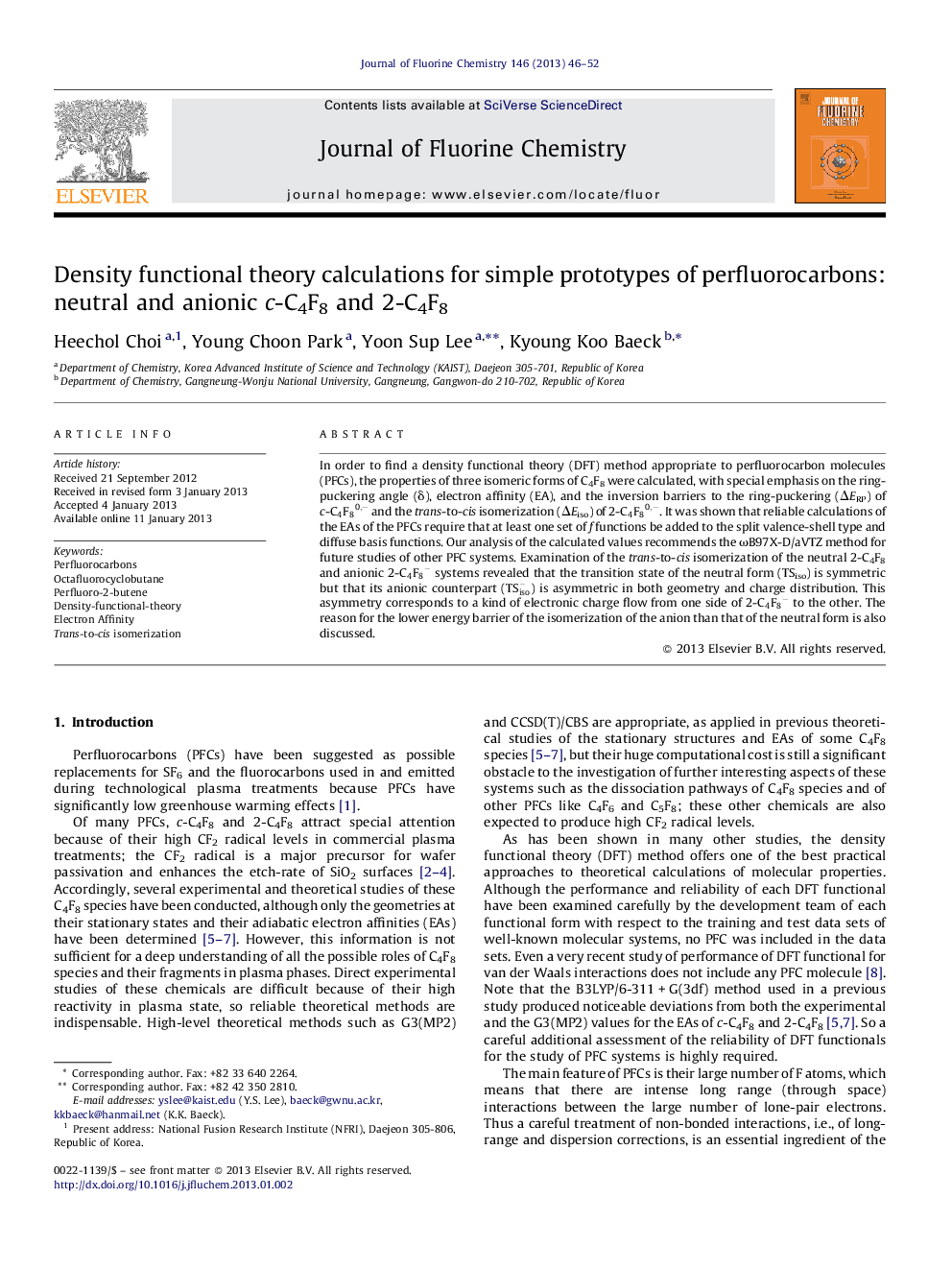| Article ID | Journal | Published Year | Pages | File Type |
|---|---|---|---|---|
| 1314779 | Journal of Fluorine Chemistry | 2013 | 7 Pages |
In order to find a density functional theory (DFT) method appropriate to perfluorocarbon molecules (PFCs), the properties of three isomeric forms of C4F8 were calculated, with special emphasis on the ring-puckering angle (δ), electron affinity (EA), and the inversion barriers to the ring-puckering (ΔERP) of c-C4F80,−c-C4F80,− and the trans-to-cis isomerization (ΔEiso) of 2-C4F80,−2-C4F80,−. It was shown that reliable calculations of the EAs of the PFCs require that at least one set of f functions be added to the split valence-shell type and diffuse basis functions. Our analysis of the calculated values recommends the ωB97X-D/aVTZ method for future studies of other PFC systems. Examination of the trans-to-cis isomerization of the neutral 2-C4F8 and anionic 2-C4F8−2-C4F8− systems revealed that the transition state of the neutral form (TSiso) is symmetric but that its anionic counterpart (TSiso−) is asymmetric in both geometry and charge distribution. This asymmetry corresponds to a kind of electronic charge flow from one side of 2-C4F8−2-C4F8− to the other. The reason for the lower energy barrier of the isomerization of the anion than that of the neutral form is also discussed.
Graphical abstractPerformance of eight DFT functionals and basis sets for the computations of ring-puckering angle, electron affinity, and the inversion barriers to the ring-puckering of c-C4F80,−c-C4F80,−, and the trans-to-cis isomerization of 2-C4F80,−2-C4F80,−.Figure optionsDownload full-size imageDownload as PowerPoint slideHighlights► c-C4F8/2-C4F8 are studied to find a proper DFT method for perfluorocarbons (PFCs). ► Electron affinity, ring-puckering, inversion barrier, and trans–cis isomerization. ► Electron affinities of the PFCs require basis sets up to one set of f-functions. ► We recommend the ωB97X-D/aVTZ method for more complicated PFC systems. ► Intra-molecular charge flow during the trans–cis isomerization of anionic 2-C4F8−2-C4F8−.
